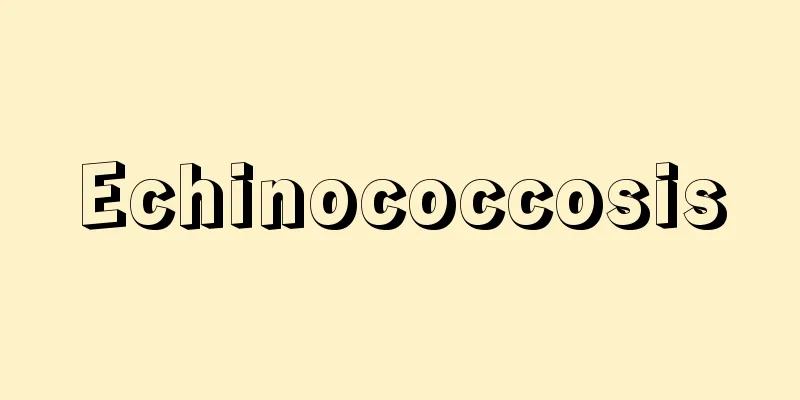Quartz - Quartz (English spelling)

|
It is an important rock-forming mineral. It is the second most abundant after feldspars. There are high- and low-type quartz. The former is called high-quartz or beta-quartz, and is stable at 573-870°C at 1 atm. It belongs to the hexagonal crystal system, has almost no prisms, and is often found as bipyramidal crystals consisting of six equivalent pyramidal faces. It is found mainly in acidic volcanic rocks formed at high temperatures, such as rhyolite and quartz porphyry. However, when high-quartz is placed at room temperature and pressure, its crystal structure changes to the low-type, while only the external shape remains the same. This change occurs easily because there is only a slight difference between the crystal structures of the high- and low-type quartz. Therefore, all quartz that we see in our hands today is, mineralogically, the low-type. The low-type is called low-quartz or alpha-quartz. Since it belongs to the trigonal crystal system, the six pyramidal faces are not equivalent, and two types of pyramidal faces are arranged alternately. Also, the prism faces are usually elongated. Quartz is called quartz when its crystal form is clear. It is usually massive or granular, and is found in acidic igneous rocks such as granite and rhyolite, regional metamorphic rocks such as gneiss and quartz schist, and sedimentary rocks such as sandstone, and the veins and occurrences that cut through them are widespread. It is usually colorless, but various names are given to those that are colored in various ways or contain different minerals. In addition to chalcedony, agate, jasper, tiger's eye, bloodstone, aventurine, and chrysoprase, it is called with articles such as red, purple, blue, yellow, black, smoke, and iron. Ferruginous quartz appears red or yellowish brown due to the fine hematite and goethite dispersed in it. Quartz is important as a raw material for glass and various ceramics. High-quality quartz is also often used for decorative items and its physical properties are utilized. Quartz polymorphs (different atomic arrangements with the same chemical composition) include tridymite, cristobalite, moganite, coesite, and stishovite. The origin of the English name quartz is not very clear, but one theory is that it comes from the Saxon word querklufterz. This word was used in mines in the early 16th century and apparently meant intersecting quartz veins in areas where metallic minerals are concentrated. Other theories include that it is an ancient Slavic or ancient High Germanic word. [Satoshi Matsubara] "The World of Quartz Glass: The Behind-the-Scenes Support of the Semiconductor and Optical Industries" by Noboru Kuzuo (1995, Industrial Research Institute) [References] | | | | | | | | | | | | | | | | [Supplementary information] |Made in Ida, Arkansas, USA ©Masutomi Geological Society Foundation Quartz (rough stone) Produced in Kumihama-cho, Kyotango City, Kyoto Prefecture ©Shogakukan Chalcedony (rough stone) Source: Shogakukan Encyclopedia Nipponica About Encyclopedia Nipponica Information | Legend |
|
重要な造岩鉱物の一種。長石類に次いで産出量が多い。石英には高温型と低温型がある。前者は高温石英high-quartzまたはβ石英(ベータせきえい)beta-quartzとよばれ、1気圧では573~870℃で安定である。六方晶系に属し、柱面がほとんどなく、等価な六つの錐(すい)面からなる両錐状結晶として産することが多い。おもに流紋岩、石英斑(はん)岩など高温でできた酸性火山岩中にみられる。しかし高温石英も常温常圧に置かれると、外形のみそのままで、結晶構造は低温型に転移する。この転移は、高温型と低温型の結晶構造にわずかな違いしかないので容易におこる。したがって現在われわれが手にとってみる石英は鉱物学的にはすべて低温型のものである。低温型は低温石英low-quartzまたはα石英(アルファせきえい)alpha-quartzとよぶ。三方晶系に属するため、6個の錐面は等価でなく、2種類の錐面が一つ置きに並ぶ。また普通、柱面が長く伸びている。結晶形の明らかなものを水晶とよぶ。普通、塊状ないし粒状で、花崗(かこう)岩、流紋岩など酸性火成岩、片麻岩、石英片岩など広域変成岩、砂岩など堆積(たいせき)岩、それらを切る脈と産状は広範囲に及ぶ。色は普通は無色であるが、種々着色したものや異種鉱物を含有するものにいろいろな名称がつけられている。玉髄、めのう、碧玉(へきぎょく)、虎目石(とらめいし)、血石(けっせき)、アベンチュリン、クリソプレースなどのほか、紅、紫、青、黄、黒、煙、鉄などの冠詞をつけてよぶ。鉄石英は微細な赤鉄鉱や針鉄鉱が分散して赤色もしくは黄褐色にみえる。 石英はガラス原料をはじめ各種窯業原料として重要である。また上質のものは装飾品としたり、物性を利用したりすることも多い。石英の多形(同じ化学組成で原子配列が異なるもの)としては、鱗珪(りんけい)石、クリストバル石、モガン石、コース石、スティショバイトがある。クォーツの英名の由来はあまり明瞭(めいりょう)にわかっていないが、一説にはサクソン語のquerklufterzからきているとされている。このことばは16世紀の初期に鉱山で使われていたもので、金属鉱物が濃集している部分にある交差した石英脈を意味したらしい。ほかに古代スラブ語説、古代高地ゲルマン語説などがある。 [松原 聰] 『葛生伸著『半導体・光産業をかげで支える石英ガラスの世界』(1995・工業調査会)』 [参照項目] | | | | | | | | | | | | | | | | [補完資料] |アメリカ アーカンソー州アイダ産©公益財団法人益富地学会館"> 水晶〔原石〕 京都府京丹後市久美浜町産©Shogakukan"> 玉髄〔原石〕 出典 小学館 日本大百科全書(ニッポニカ)日本大百科全書(ニッポニカ)について 情報 | 凡例 |
<<: Quartz glass - sekieigarasu (English spelling) quartz glass
Recommend
Quebec [province] - Quebec
A vast province in eastern Canada. The plains alon...
Kazoku Bank
…The 15th National Bank, whose capital was the no...
Nuclear fusion gains
… [Conditions for thermonuclear fusion plasma] To...
rhythmic sedimentation
…Good examples include varved clay, graded beddin...
Shellac wax (English spelling)
…Used in cosmetics and medicines (ointment base),...
Arita Circus - Arita Circus
...a spectacle consisting of animal tricks and hu...
Definite modulation - Definite modulation
…Modulation, by definition, presupposes the exist...
Shuhiyushi (English spelling) zhū pī yù zhǐ
This is a compilation of memorials sent by local o...
Air gun - Air gun
A gun that uses air pressure to fire a metallic b...
Iwakuraiwasaka - Iwakuraiwasaka
A specific area surrounded by rocks or stones wher...
Joint liability - Rentaisaimu
It is defined as a debt between multiple parties,...
Grass - Shibafu
It refers to a place where herbaceous plants for ...
clear ice
…IcingThere are two types of icing: glaze and fro...
Giant pipe vine - Giant pipe vine
...The most well-known is the pipe vine A. elegan...
Lake Nukabira
This artificial lake is located in Kamishihoro To...









